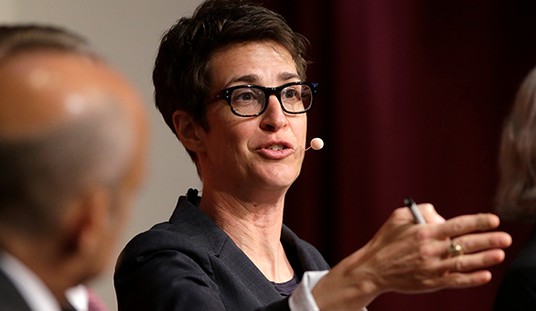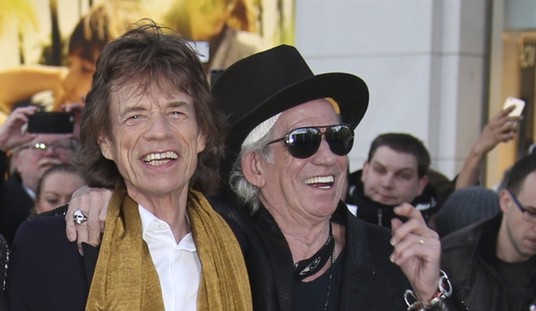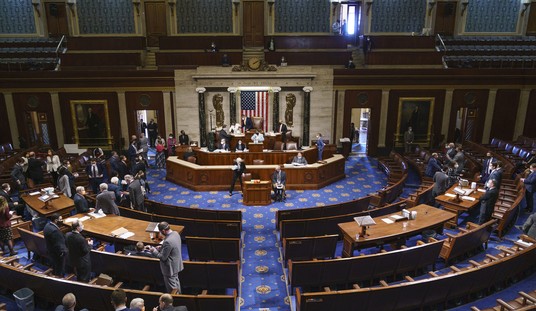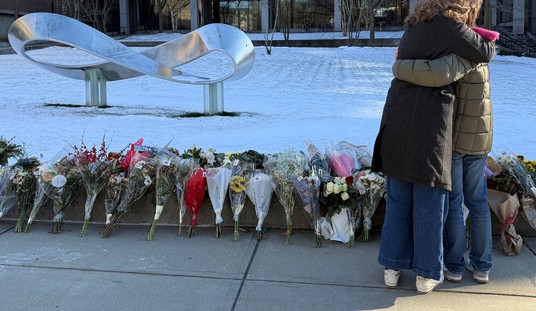In the middle of the night, at 1:30 in the morning of Friday, August 14th, there was a large explosion at the monster petrochemical facility of the Iranian Pars Petrochemical Company in Bandar Assaluyeh. It is the biggest such plant in Iran, and the second largest in the whole Middle East (second only to one in Saudi Arabia).
The explosion, which took place in pipes carrying Liquid Petroleum Gas (which is mostly propane), caused fires throughout the facility. It took at least three hours before the fires were brought under control. At least two persons died (fortunately, at that hour personnel was at a minimum) and at least 30% of the plant was completely destroyed. Pars was forced to shut down the entire facility. Early estimates predicted it would remain closed for a month or two, and as of this writing it is still shut down.
The incident was almost certainly an act of sabotage by the regime’s enemies, and the whole story has been spiked. But the effects can be seen as far away as Tehran. Due to the chronic shortage of gasoline, many of the city’s 3500 buses and thousands of taxis had been converted to run on LPG. They were grounded after the attack on Pars, amounting to almost all of the two thousand LPG-run buses and, at a minimum, hundreds of taxis. Some of them are now being switched back to gasoline, but, given the country’s notorious lack of efficiency, it is a slow process. All this not only increases the ongoing distress of Iranian commuters, but heightens the country’s vulnerability to a potential cutoff of foreign gasoline, which has been proposed by bills now on the Congressional agenda.
This event has still not hit the major media, but it is well known to the leaders of the Islamic Republic, who were already facing an internal crisis of unprecedented magnitude. The regime’s internal enemies are getting stronger and more brazen, despite the bloody crackdown of recent months. The protests against the supreme leader, the president, and the top leaders of the regime, encompass every major city in the country. Every night chants of “Death to the Dictator!” ring out from rooftops and from within prisons. Whenever large numbers of people congregate, it becomes an occasion for an anti-regime demonstration, as took place in Tehran the other night during a soccer game in Azadi stadium.
Labor protests continue apace. As the indispensable Green Brief tells us,
“Reports have emerged that there is a strong possibility of workers’ strikes in Iran. Reports suggest that over 200,000 workers have not been paid their wages in months and this could lead to strikes in the very near future. This comes as the workers in Fars province’s main automobile factory have been on strike over the issue for the past five days. Other reports suggest that unemployment in Tehran alone has risen by 3% in the past few months.”
Above all, the horrors perpetrated by the regime against the peaceful demonstrators following the fraudulent June 12th elections are by now undeniable, supported by a torrent of testimony, and, in recent days, grim photos and even videos from the central cemetary in Tehran. It has now been established that the regime was overwhelmed by the magnitude of their own slaughter, and, faced with the problem of how to dispose of hundreds of bodies (many of which carried unmistakable marks of torture and sexual abuse), stashed them in meat lockers in and around Tehran. Testimony from cemetery workers tells of receiving frozen bodies in the middle of the night from security forces.
Some of this evidence is circulating on the Web; other documentation–audio and video alike–is being used within the political universe as part of a vicious war of all against all–and, notably, by the dissident Green Wave Movement of Mir Hossein Mousavi–that characterizes the death spiral of the Islamic Republic. Worse yet, according to Afshin Ellian, the highly reliable law professor at the University of Leiden in Holland, Supreme Leader Khamenei has received secret messages from Grand Ayatollah Sistani in Najaf, Iraq, criticizing the bloodthirsty behavior of Khamenei’s people. Sistani has apparently echoed the statement earlier this week from Grand Ayatollah Montazeri that the regime is neither “Islamic” nor “a Republic,” but a tyranny. Disrespect for the regime was also publicly displayed by the family of the founding father. In a break with protocol, Hassan Khomeini, the Ayatollah’s grandson, ostentatiously did not welcome Ahmadinejad and his administration when they visited the Imam Khomeini Shrine. Nor did he attend the swearing-in ceremony for the new government.
As Machiavelli warned his prince, the most dangerous thing for any leader is to provoke the contempt of the people.
All this pressure led the supreme leader to make a speech a few days ago that can best be described as a suicide note. After years of blaming the widespread protests, strikes and mockery of the regime on foreign agitators (including me and other Western critics), Khamenei gainsaid it all. “The judiciary should not base its judgment on rumors but on hard evidence. I do not accuse the leaders of recent events (read Mousavi and others) to be in the service of England or America. It is not proven that they worked for America or England.” As an Iranian friend of mine put it, Khamenei didn’t turn 180 degrees, he went the full 360.
With these words, the supreme leader pulled the plug on many colleagues who were demanding the prosecution and punishment of the leaders of the dissident Green Movement, Mousavi, Karroubi and Khatami. Then he did something even more astonishing. He tacitly admitted that the stories of horrible torture, murder and humiliation of the protesters at the hands of the Iranian security forces were true, and he went on to say that the evildoers would have to account for their crimes.
“Mistakes have been made, laws have been violated and crimes have been committed. The perpetrators have to be treated with a hard fist,” he proclaimed. And as for the many violent attacks on the country’s students, he had the same message: “The attacks on the student dormitories at the campus have to be criminally investigated”.
Not to put too fine an edge on it, the supreme leader admitted guilt, and opened the door to the prosecution of his entire regime. He proclaimed the innocence of his enemies and called for the prosecution and punishment of his allies. But how can he hope to escape blame himself? There is no doubt that the vicious assault on the peaceful demonstrators was ordered by Khamenei himself. Given the atmosphere within his inner circle these days, there is also no doubt that his enemies have proof of that, as they have documentary proof of the unmarked graves in Tehran, and the freezing of the bodies of the innocent in meat lockers in the area.
It is reminiscent of that moment, thirty years ago, when the shah admitted that his security forces had gone too far, and promised he would crack down on them. This open confession of weakness inspired Khomeini’s followers, and marked a watershed in the history of the revolution. From that moment on, the revolutionaries no longer feared the regime, and the shah’s people started to betray him and one another. There is reason to believe Khamenei’s speech has the same significance.
There is already a Parliamentary commission investigating the torture and murders in the regime’s prisons following the post-election uprising, and, in a dramatic event, the former chief prosecutor, and the head of the dreaded Revolutionary Tribunal, Saeed Mortazavi, aka the butcher of Tehran, has been fired. No man in the entire regime was more hated nor more dreaded than Mortazavi, who was particular vicious towards those who tried to expose the evils of Iran’s rulers. Mortazavi was famously in charge of the silencing of hundreds of newspapers and countless writers, journalists, bloggers and peaceful protesters.
Ahmadinezhad reacted angrily, insisting that the opposition leaders had been in cahoots with foreigners, and called for their prosecution and punishment. But within a day, he tacitly admitted that the charges were true, albeit still blaming his opponents. Press TV, a propaganda outlet for the regime, reported on August 28th “Iranian President Mahmoud Ahmadinejad has said that “certain mistreatments in detention centers” are “parts of the enemy’s plot and were carried out by ‘coup’ elements.”
Even the head of the Revolutionary Guards, General Mohammad Ali Jafari, said on Saturday that ‘harsh’, ‘unacceptable’ and ‘criminal’ activities had taken place in the dormitory at Tehran University. He said an investigation would be conducted, and insisted that no one from the official militias was culpable, blaming the whole thing on “plainclothes” people “acting on their own.”
He can say whatever he likes, but those actually responsible for the recent slaughter cannot feel very secure. They know that their masters will not hesitate to throw them to the mob if things get worse. And things promise to get worse.
Why did Khamenei do it? His health has been poor for years, and he is widely believed to take powerful opium syrup to deaden the pain from his cancer. But even so, it is unlikely he spoke because of mental confusion, or–even less likely–because he has seen the error of his ways and is resolved to behave decently. He is not the sort who wakes up one morning, has an epiphany, and abandons the policies and the people who have sustained his power for two decades. Such behavior bespeaks real fear. What could explain such fear?
In all the coverage of the ongoing Iranian crisis, most of the pundits have missed what seems to me the key point: the nature of the opposition. Who are Mousavi and his friends? Many of them, most definitely including Mousavi himself, are experienced and very tough revolutionaries. They were with Khomeini thirty years ago, and they constructed the Islamic Republic. They know how the system works, and they undoubtedly know enough about key officials to be able to exert enormous pressure on them.
Afshin Ellian has reported in the Dutch Press that the opposition leaders confronted Khamenei with the evidence of his own criminal activity. He was then given the choice between admitting guilt, or facing the release of the evidence. His opponents are not salon intellectuals, and they know that they are in a life or death confrontation. Contrary to those who have long said that a revolution in Iran is impossible because there is no effective leader, the events of the past two and a half months have demonstrated that Khamenei is facing very dangerous leaders who threaten the supreme leader both from the outside–with tens of millions of followers whose courage and resolve are growing with the passage of time–and from within, because of their intimate knowledge of the inner workings of the Islamic Republic and their ability to convince and coerce key actors to help the Green Wave.
Khamenei knows all this. Pity nobody seems to have told the Western leaders. If Obama and his czars were as smart as they think they are, they’d be talking to the future leaders of Iran right now. If the regime’s enemies can take out the country’s biggest petrochemical plant, and compel the supreme leader to bend to their will, they can–and no doubt will–do more.









Join the conversation as a VIP Member